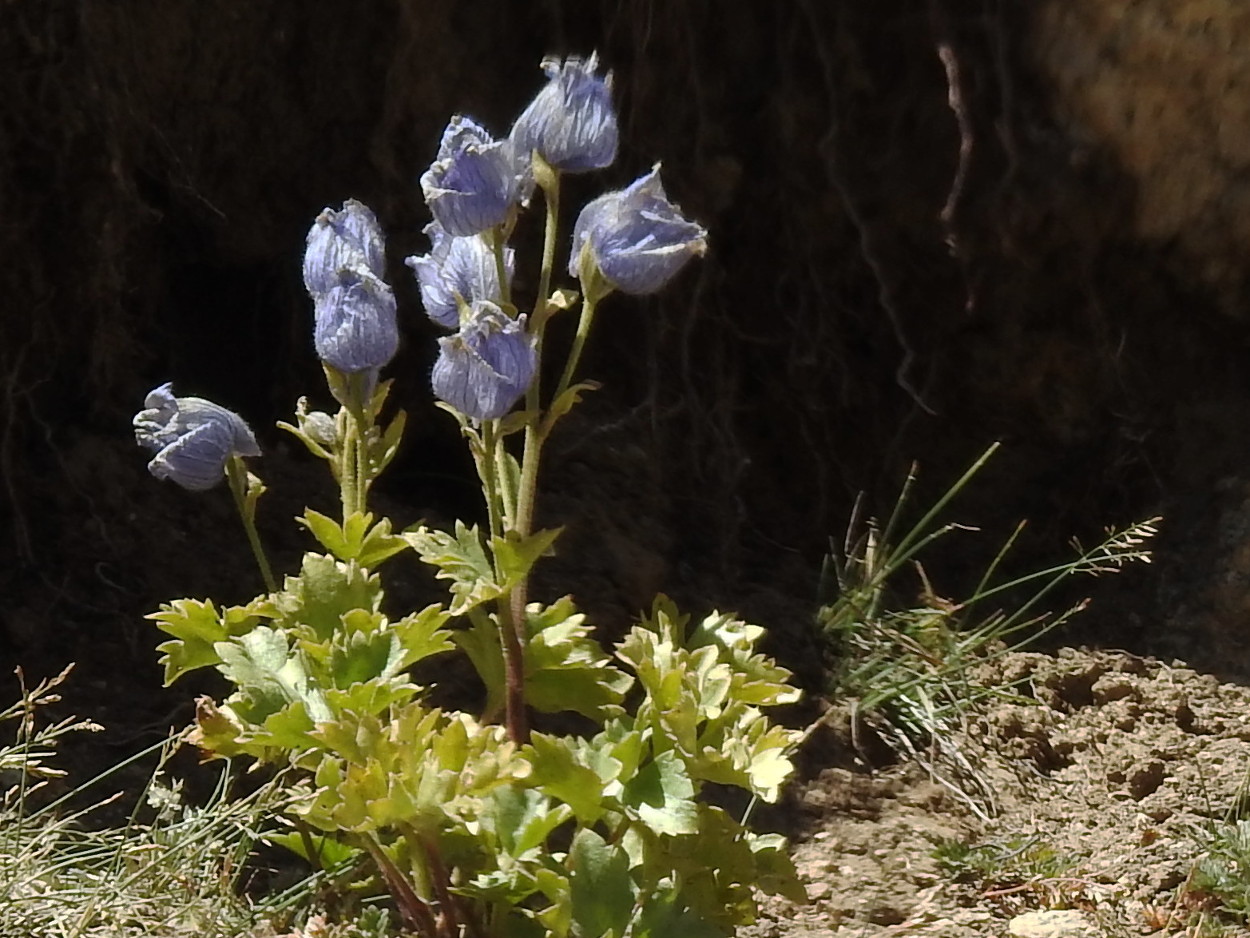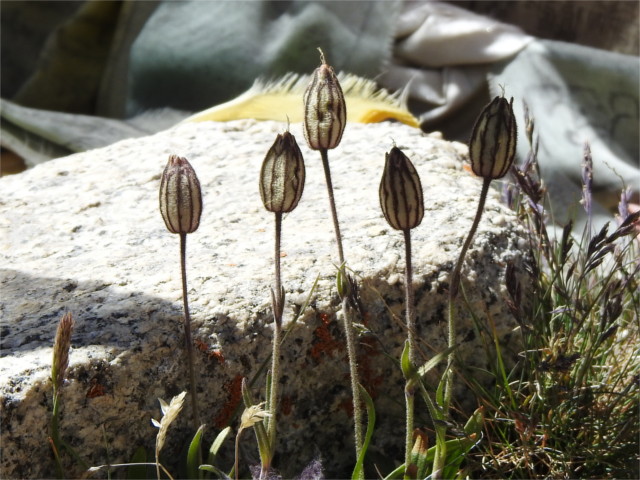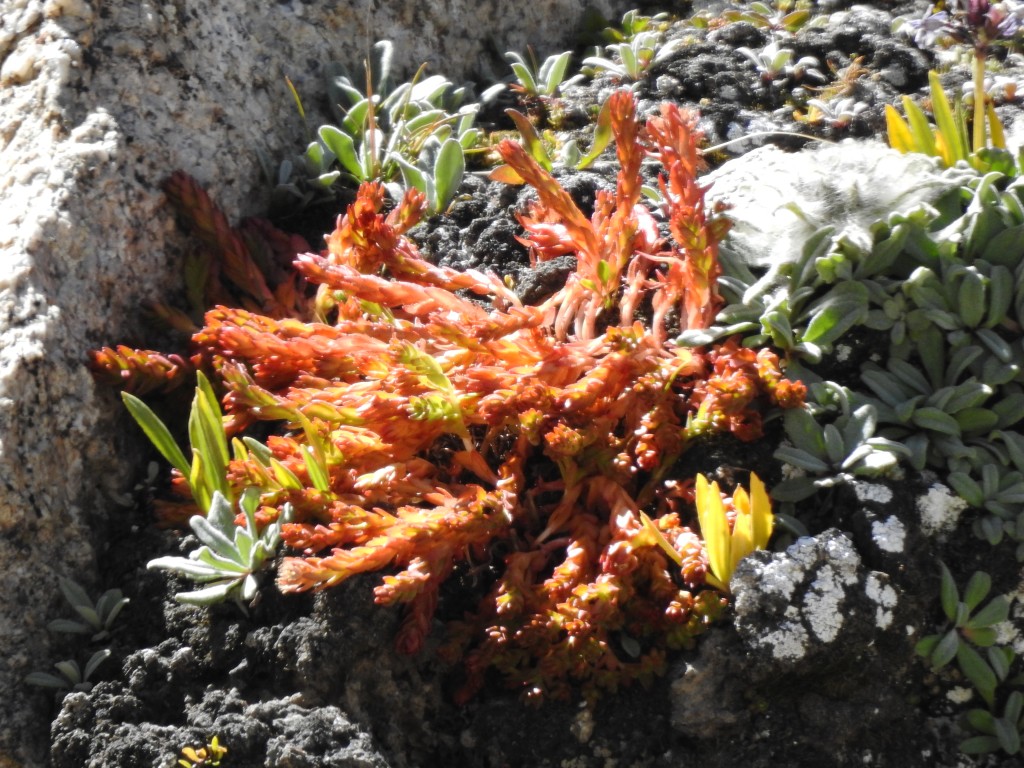Right on top of Wari La I saw masses of flowers blooming. It was early September, but quite warm. The flowers that you see in the featured photo belong to the Musk Larkspur (Delphinium brunonianum). Many of these 10 to 20 cm tall bushes were in full bloom. They have been recorded at least up to an altitude of 5500 meters, and perhaps they grow even higher in some patches. They typically flower from July until September. The papery flowers glowed in the sun. I didn’t feel like climbing up slope to check that they have the musky smell that gives them their name.
Nearby I saw a few stalks of these Himalayan Campion (Silene himalayensis). Their range is small, from Afghanistan in the west to western Tibet, somewhat east of here. They are said to be found up to about 5000 meters, and this was close enough to its highest elevation. Perhaps that’s why I saw few of them. The hairy stalks jutted up almost 30 cms from the spreading mass of the plant, each carrying just a couple of pairs of opposed lance-shaped leaves and one papery flower.
The most widespread of plants was this reddish clump. Before looking at it carefully I’d assumed it was a grass, but it is clearly not. Unfortunately I don’t have a good identification of it. It could be a Stonecrop (genus Sedum). If so I’m not unhappy even without a closer identification, since there are a few hundred species in this genus, and a large fraction of them lie in a belt between the Mediterranean and east Asia. I should have climbed closer to get better photos of the flowers, but the altitude made me lazy.
There weren’t many of these Ladakh Saxifrage (Saxifraga stenophylla) growing here, and the few there were hid from the wind behind small rocks. The low stem, about 10 cms tall, allows them to do that and still get the sun most of the day in summer. They are found between Tajikistan and Pakistan in the west and Sikkim in the east. We hadn’t looked for them in the lower meadows, but it is possible that we would have found them if we’d looked. Normally one would think early September is a bit late for them, but this was a warm year.
My oddest find was this plant. I was delighted to see that it was the Inverse Snow Lotus (Saussurea inversa). The snow lotuses are often hardy high altitude plants which require long winters and grow above 4000 meters. I suspect that as the planet warms and glaciers melt these will go the way of the dodo. Insufficient oxygen will arrest their movement well beyond their current limits, and the desiccation of the soil as glaciers melt will shorten their growing season. Since these plants are clearly under climate pressure, I was happy to have seen my first Snow Lotus.


I will end this post with photos of a species that I found growing about 800 meters below the pass. I don’t have a positive identification, but I suspect it is a Candytuft, from its close resemblance to the European species Iberis saxatilis. It is unlikely to be this species, because its easternmost range has been found to be Turkey. But it could be related, since there are other Candytufts in the Himalayas. The shape of the leaves is closer to I. saxatilis than to the Himalayan species I’ve been able to check.




